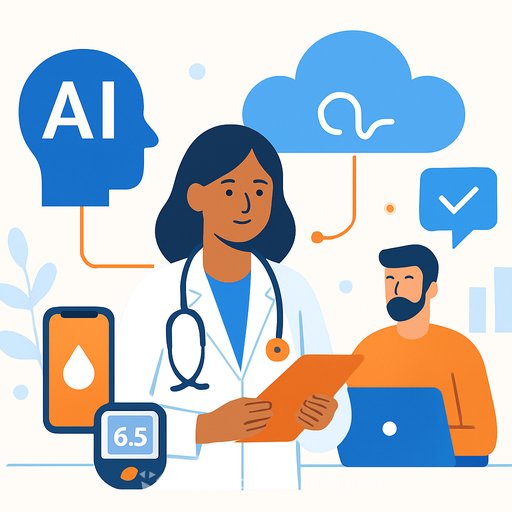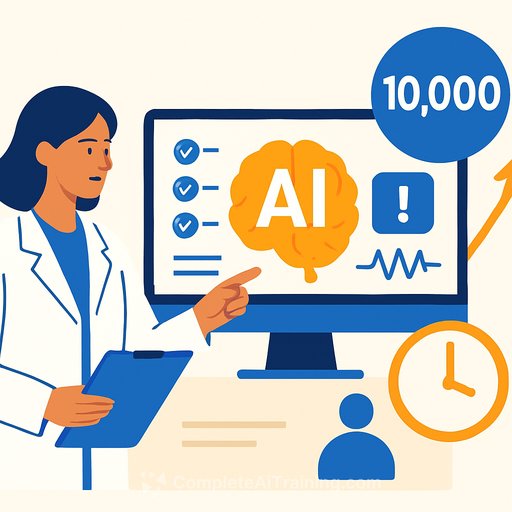How AI agents scale personalized diabetes care
Precina Health runs a virtual-first clinic across California, Oregon, and Texas with a simple goal: keep type 2 diabetes under control and keep patients out of the hospital. The mission is personal for CEO and cofounder John Oberg, whose mother faced diabetic ketoacidosis. The team tackles two problems at once-rising costs and fragmented care-while giving patients the support they need to regain their health.
The financial burden is real. Insulin, glucose meters, test strips, and syringes stack up quickly. The CDC estimates that about $1 in every $4 of U.S. healthcare spending goes to diabetes care, directly or indirectly. CDC Diabetes Quick Facts.
The platform: Agentforce as the AI layer
To personalize and scale care, Precina uses Salesforce Agentforce-an agentic AI layer built into the Salesforce platform. It supports chat-based patient interactions across the mobile app, web, and site chatbots, and gives staff the same omnichannel access. The result is higher outreach volume with more context in every touchpoint.
Agentforce brings interaction, business process, logic, and data into one place. As Salesforce's Madhav Thattai put it, the goal is to ensure agents have the right data so every interaction is "personalized, specific, [and] accurate." He also noted that the LLM-backed agents feel fluid: "You don't feel like you're talking to a robotic bot."
If you want a product overview, see Salesforce's page on Agentforce: Agentforce overview.
How Precina puts AI agents to work
- Patient recruitment and scheduling: Agents act like outreach reps, engage prospects on the site and social channels, answer common questions, and book visits with coaches.
- Unified clinical data: Agentforce connects EHRs, lab feeds, prescriptions, Health Cloud, and Data Cloud so clinicians see a single picture instead of chasing records across systems.
- Voice copilot for clinicians: Providers can access charts by voice, retrieve inbound records, and generate clean summaries. Documentation, classification, and chart prep are sped up.
- Provider coaching and QA: With Sales Coach Agent plus Precina's proprietary AI, clinicians get feedback on empathy, clarity, and conversational quality-along with an AI summary after calls.
- Protocol-driven visit prep: An AI copilot-programmed by cofounder and CMO Dustyn Williams, M.D.-helps clinicians read charts and follow precise protocols before appointments.
Training clinicians and paraprofessionals-at scale
Agentforce handles onboarding and ongoing training with role-play sessions that simulate real patient conversations. A Sales Coach Agent plays the prospect, challenges the rep or clinician, then scores and summarizes performance. This frees leaders from constant live shadowing while keeping standards high.
Clinicians practice rapport building and motivational interviewing. Paraprofessionals get guidance on HIPAA compliance and clinical accuracy. As Oberg puts it, the coach gives "tireless" feedback in a judgment-free environment-and staff can use it as often as they want.
Patient care impact
- Medication adherence and lifestyle change: Agents reinforce routines and follow-up plans around diet, exercise, and medications.
- Faster care planning: Providers can build personalized meal plans in minutes rather than hours.
- Better communication: AI flags whether a provider came across as empathetic and suggests if motivational interviewing would help.
Why the data layer matters
Personalization depends on context. Agentforce's data layer pulls from clinical systems so agents and copilots operate with current labs, prescriptions, and visit notes. That keeps answers specific and reduces back-and-forth. It also lowers the risk of errors caused by missing or stale information.
What healthcare leaders can emulate
- Start with one outcome: pick a measurable goal like A1c reduction, time-to-appointment, or no-show rate.
- Map your data flow: list EHR, labs, pharmacy, care management, and patient-facing apps; define what each agent needs to read/write.
- Pilot targeted workflows: recruitment and scheduling, chart prep summaries, or documentation automation are quick wins.
- Build a training loop: use AI role-play to standardize tone, empathy, and compliance; review AI summaries weekly.
- Measure and iterate: track conversion rates, documentation time saved, average handle time, adherence, and patient-reported experience.
What's next at Precina
Precina plans to extend Agentforce into goal setting and habit tracking for patients, and to bring in ambient voice agents for providers. Longer term, Oberg sees AI agents joining conversations between patients and peer counselors to offer clinical guidance when needed-expanding reach without sacrificing safety.
He estimates that combining AI agents with peer counseling could cut the cost of delivering mental healthcare by 90% or more. Ambitious, yes-but anchored in a clear focus: outcomes first. As Thattai reminds teams adopting AI, the question is simple-what result are you driving for your patients?
Resources
Upskill your team
If you're planning agentic workflows in your clinic, you may find these course collections useful: AI courses by job role.
Your membership also unlocks:






